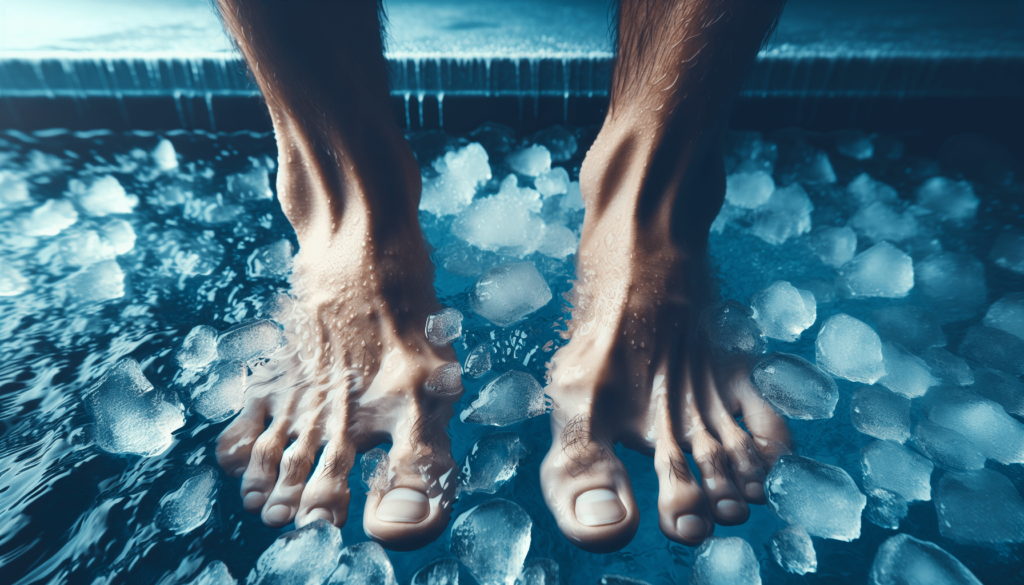Are you a cold plunge enthusiast wondering how long is too long to stay in the icy waters? Well, you’re in luck! In this article, we’ll explore the benefits of cold plunges, how long you should ideally stay in the cold water, and the potential risks of staying in too long. So sit back, relax, and let’s dive into the world of cold plunging! What Is Too Long In A Cold Plunge?
Have you ever wondered how long is too long to stay in a cold plunge? Maybe you’re a regular at the ice bath or just starting to dip your toes into the world of cold therapy. In this article, we’ll delve into the ideal length of time to spend in a cold plunge to reap the maximum benefits without risking any adverse effects on your body. So, let’s break down the science and find out what is too long in a cold plunge.

Understanding Cold Plunges
Before we dive into the ideal duration of a cold plunge session, let’s first understand the basics of what a cold plunge actually is. A cold plunge, also known as cold immersion therapy, involves immersing your body in cold water typically ranging from 50 to 60 degrees Fahrenheit for a certain period of time. This practice has been used for centuries to promote various health benefits, such as reducing inflammation, improving circulation, and boosting recovery after intense physical activities.
Health Benefits of Cold Plunges
Cold plunges have gained popularity in the health and wellness community due to their numerous benefits for the mind and body. Some of the key advantages of cold plunges include:
- Reduced Inflammation: Cold immersion can help reduce inflammation in the body, which is beneficial for athletes recovering from workouts or individuals managing chronic pain conditions.
- Improved Circulation: The cold water causes blood vessels to constrict and then dilate, which can enhance circulation and deliver oxygen-rich blood to the tissues.
- Enhanced Recovery: Cold plunges are believed to speed up the recovery process by reducing muscle soreness, increasing the production of endorphins, and promoting relaxation.
- Mental Clarity: Many people report feeling more alert and focused after a cold plunge session, attributing this to the release of neurotransmitters like norepinephrine.
Now that we have a better understanding of the benefits of cold plunges, let’s explore how long you should stay in a cold plunge to maximize these positive effects.
Ideal Duration of a Cold Plunge
The ideal duration of a cold plunge session can vary depending on several factors, such as your tolerance to cold, overall health condition, and experience level with cold therapy. In general, most experts recommend starting with shorter sessions and gradually increasing the duration as your body acclimates to the cold water.
Recommended Duration for Beginners
If you’re new to cold plunges, it’s best to start with shorter sessions lasting anywhere from 30 seconds to 2 minutes. This initial exposure to cold water allows your body to adapt to the temperature and prevent any sudden shock to your system. As you become more comfortable with the cold, you can gradually extend the duration of your cold plunge sessions.
Duration for Intermediate and Advanced Users
For those who have more experience with cold therapy, you can aim for cold plunge sessions lasting between 3 to 10 minutes. Intermediate and advanced users may be able to tolerate longer periods in cold water due to their increased tolerance and adaptation to the cold. However, it’s important to listen to your body and avoid pushing yourself beyond your limits.
Signs to Watch For
No matter your experience level, it’s crucial to pay attention to how your body responds during a cold plunge session. Some signs to watch for include:
- Shivering: Mild shivering is normal as your body tries to generate heat in response to the cold water. However, persistent shivering could indicate that you’ve been in the cold water for too long.
- Numbness or Tingling: If you start to experience numbness or tingling in your extremities, it’s a sign that your body is losing heat too quickly.
- Dizziness or Fatigue: Feeling lightheaded, dizzy, or fatigued during a cold plunge session could indicate that your body is under stress and needs to warm up.
Listening to Your Body
Ultimately, the best guide for determining how long is too long in a cold plunge is to listen to your body. Pay attention to any signals or discomfort that your body is sending you and adjust your cold plunge duration accordingly. It’s better to start with shorter sessions and gradually increase the duration as you become more comfortable with the cold water.
Tips for a Safe and Enjoyable Cold Plunge
To ensure a safe and enjoyable cold plunge experience, here are some tips to keep in mind:
Gradual Entry and Exit
When entering and exiting the cold plunge, it’s essential to do so gradually to prevent any shock to your system. Take your time to acclimate to the cold water slowly and avoid sudden movements that could lead to a cold shock response.
Proper Breathing Techniques
Maintaining controlled breathing during a cold plunge can help you relax and stay calm in the cold water. Focus on slow, deep breaths to regulate your heart rate and manage any feelings of discomfort during the session.
Warm-Up Before and After
Before immersing yourself in the cold plunge, it’s beneficial to warm up your body with some light exercises or stretches to prepare your muscles for the cold water. Similarly, after your cold plunge session, engage in some gentle movements to help your body return to its normal temperature.
Hydrate and Refuel
Staying hydrated before and after a cold plunge is vital for supporting your body’s recovery and replenishing any fluids lost during the session. Make sure to drink plenty of water and refuel with a nutritious snack to replenish your energy levels post-plunge.
Check with a Healthcare Professional
If you have any underlying health conditions or concerns about engaging in cold plunges, it’s always advisable to consult with a healthcare professional before starting any cold therapy regimen. They can provide personalized advice and guidance based on your individual health needs.
Conclusion
In conclusion, spending time in a cold plunge can be a rewarding experience with many health benefits to offer. The ideal duration of a cold plunge session can vary depending on your individual tolerance level and experience with cold therapy. Start with shorter sessions for beginners and gradually increase the duration as your body acclimates to the cold water. Remember to listen to your body, watch for any signs of distress, and always prioritize safety and comfort during your cold plunge sessions. So, the next time you’re contemplating how long to stay in a cold plunge, trust your instincts, and enjoy the invigorating benefits of cold immersion therapy.


